Many areas in Poland are already regarded as ‘must see’ places in Europe – and attract masses of travellers.
In current circumstances we believe your clients may prefer to avoid crowdy cities and use this strange times to go off the beaten tracks and explore hidden treasures of the world.
We encourage you to visit the eastern part of Poland - quiet, colourful and charming.
Please choose the entry and departure point in Poland and indicate the length of your stay in our country – we will design the best possible itinerary for you.
Contact us to receive the best possible program suggestions and quotes. Use our short descriptions as ready-made elements to create an attractive itinerary for you clients.
We look forward to hearing from you.
KAZIMIERZ DOLNY
Kazimierz Dolny dates back to the 14th century. Picturesquely located on the bank of the River Vistula, the town attracts visitors with its irresistible charm.
Nowadays it is a Mecca for artists, coming here to gain inspiration from the breath-taking landscape.
The quaint Market Square with some fine Renaissance buildings is overlooked by the ruins of a Gothic castle.



LUBLIN
The Old Town dates back to the 14th century with Krakowska Gate, Town Hall and Dominican Church.
The Castle founded by Casimir the Great includes the Gothic chapel, containing a beautifully restored 14th century polychrome – reckoned the most precious Polish example of Russian-Byzantine painting.



KOZŁÓWKA
50 km drive north from Lublin to visit the former Zamoyski family residence, founded in the 18th century and expanded at the beginning of this century.
Visit to the Baroque garden, the palace with its precious paintings, sculptures and furniture.
The former coach-house holds a collection of 1950’s Socialist Realist art, the optimistic style of propaganda imposed on artists under the Communist regime. The very much unwanted monument to Polish Communist Party leader, Bolesław Bierut which used to grace a Lublin square and another to the Russian firebrand Vladimir Ilych Lenin from Poronin where he was once in exile, have found a final tranquil if mockingly inappropriate resting place here.
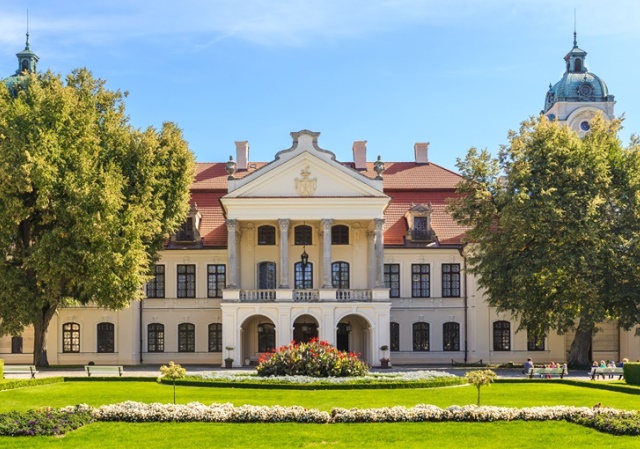
ŁAŃCUT
Łańcut castle was was originally built in the 16th century.
Reconstructed in the French Baroque style. Surrounded by fortifications and a magnificent park, it houses a museum of interiors, exhibitions of paintings, sculpture, china, tapestries and old furniture.
The Museum of Carriages, consisting of over fifty “britzkas”, chaises, hunter’s – and mail-coaches is what brings many visitors to Łańcut.
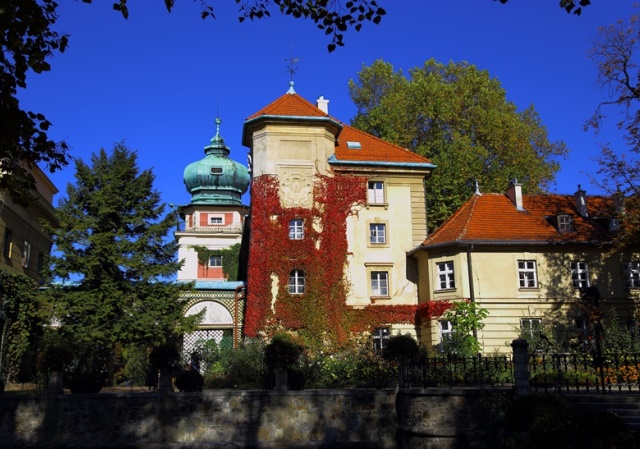
SANDOMIERZ
One of the oldest towns in Poland.
The region’s capital since the 12th century, it suffered from Tartar invasions sev-eral times in the 13th century.
The town is now considered one of the best examples of Gothic and Renaissance urban architecture.




ZAMOŚĆ
A UNESCO World Hertitage Site
This unique city was founded in 1580 and its centre has maintained its original Renaissance plan. The Old Town Square is surrounded with Renaissance houses with arcades and imposing Town Hall.



BARANÓW SANDOMIERSKI
Baranów Sandomierski castle is one of the grandest residences in Poland.
Many famous artists worked here, including: Santi Gucci and Falconi. Completed in 1602, later rebuilt by Tylman von Gameren, became one of the most beautiful Mannerist residences.
Now a hotel with 30 rooms.
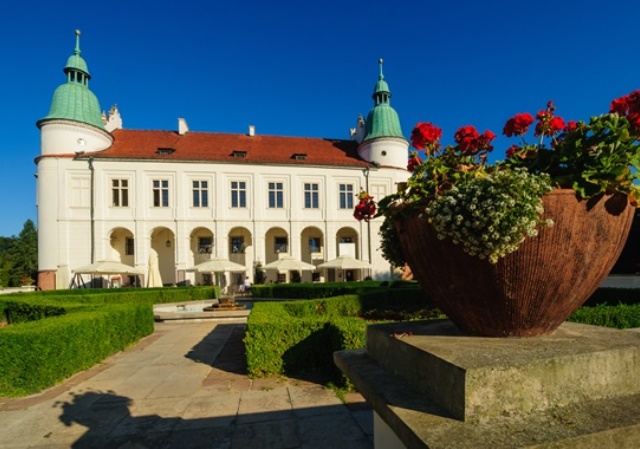
TARNÓW
For centuries the town was a private property and belonged to powerful families. On the Mount St. Martin there are ruins of a castle from fourteenth century. The oldest building it the Renaissance colourful Market Square dates from 1524.
Worth seeing are also for the Renaissance town hall and the mikvah - a ritual bath in the Moorish style from 1904.


PRZEMYŚL
A city of many cultures with many secular and sacral historical buildings.
The originally Gothic and now predominantly Baroque cathedral contains spectacular frescoes and stained glass windows.
The Przemyśl Fortress is Europe’s third largest stronghold of this kind after those of Antwerp and Verdun, representing the highest achievement in military construction from the 19th and 20th centuries. The fortifications were composed of 42 forts arranged in two rings; the outer line was constructed 8-12 kilometres from the city limits. The remaining fragments of the fortress are a great tourist attraction.


SANOK
The town has a Gothic castle, rebuilt in the Renaissance style.
Visiting a huge collection of icons explaining the art of ‘writing’ an icon is a great experience. An exhibition of works by Zdzislaw Beksiński - born in Sanok painter, sculptor, photographer and graphic artist - is worth seeing modern arts amateurs.
The Sanok Ethnographic Park with precious objects of wooden architecture of the region shows the story of ethnic minorities which used to live here.




BIESZCZADY REGION
Surrounded on three sides by Slovakia and Ukraine, the region has one of the purest natural environments in the country.
The low population density has resulted in a minimal level of development.
Łemks and Boyks, the Ruthenian minority populated this region till their tragic deportation in 1949. These two small groups, who follow the Orthodox and Uniate faiths and speak variations of Ruthenian dialects similar to Ukrainian language, were force-fully repatriated either to Ukraine or Western Poland after WW2.
Forestry Railway in Bieszczady
The 760 mm gauge line, 25 km long from Nowy Łupków to Majdan near Cisna opened in 1898. It takes you slowly (10 km/hour) through parts of the mountains which would be inaccessible by car.
You can touch the hazel-tree twigs with your hand and admire tens of small brooks.
On request very attractive rides in hand powered trolleys can be arranged.
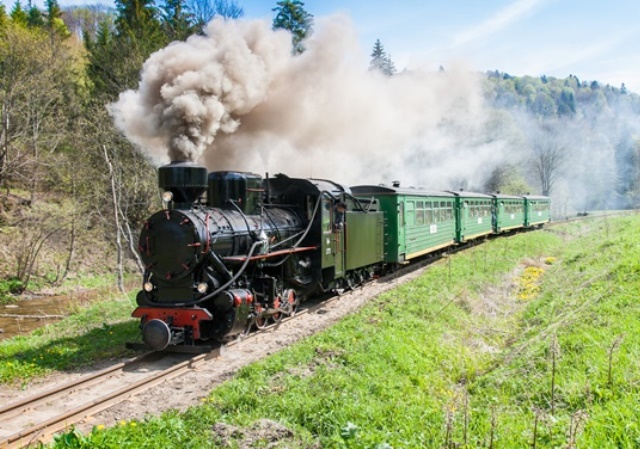
SOLINA
Solina Lake is the largest artificial reservoir in Poland. It has an area of 22 km2 and its picturesque coastline is approx. 160 km long. Cruises on the lake are available in summer time.
Solina Dam is 664 meters long, over 80 meters high and was built of 2 million tonnes of concrete. Walking down its inside service tunnels, 2.5 km long with a constant temperature of 7-8 ° C and 100% humidity is a great experience.


KRASICZYN
The construction of Krasiczyn Castle commenced in 1580. Stanislaw Krasicki was the founder. Firstly it served primarily as a military object.
The construction of the castle was supervised by Italian architect while the interior was designed by the artist from Przemysl.



Turzańsk
Together with 16 other Orthodox churches ocated in Poland and Ukraine was put on UNESCO list. The oldest ones date back to the 16 century.
They represent common building traditions of Russion Orthodox and Greek–Catholic church but also a variety of styles created by ethnic minorities.
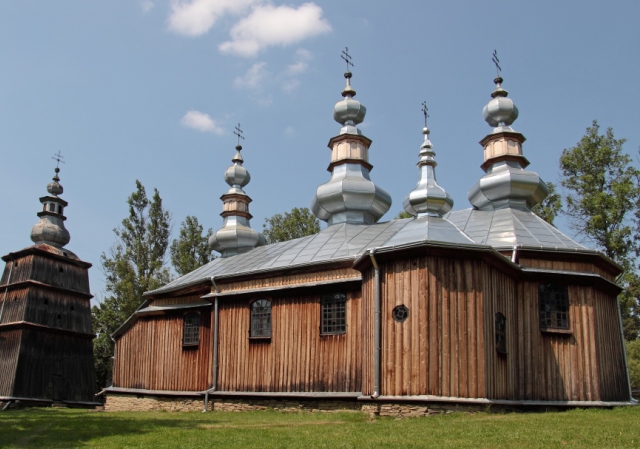
BIAŁYSTOK
The capital of Podlasie Region is a perfect starting point for day trips.
First mentioned in 1514 – the city owes most of it historical monuments do Branicki family.



BIAŁOWIEŻA
The capital of Podlasie Region is a perfect starting point for day trips.
First mentioned in 1514 – the city owes most of it historical monuments do Branicki family.









